यदि आप कभी भी एक चिकना में आते हैं, अपने कीमती गैजेट्स या टूल्स की रक्षा करना मजबूत मामला, संभावना है कि यह एक ईवा मामला है. ये मामले हर जगह हैं - चिकित्सा उपकरणों की सुरक्षा के लिए यात्रा के दौरान अपने इलेक्ट्रॉनिक्स को सुरक्षित रखने से. लेकिन क्या वास्तव में उन्हें इतना लोकप्रिय बनाता है? चलो गोता लगाते हैं और इसे तोड़ते हैं, तो आप एक ईवा मामला क्या है और यह कई के लिए विकल्प क्यों है, इस पर एक ठोस पकड़ प्राप्त कर सकते हैं.
ईवीए सामग्री क्या है??
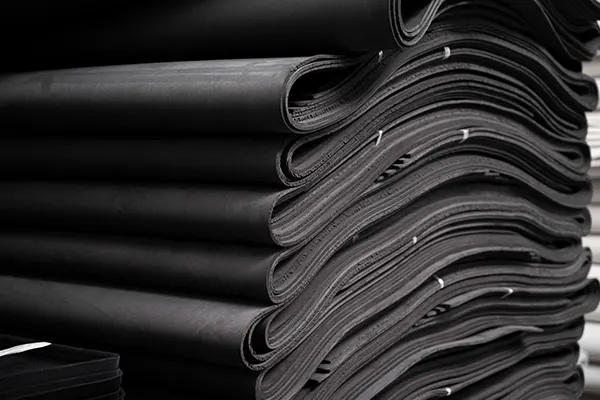
ईवा का मतलब एथिलीन-विनाइल एसीटेट है. यह एक प्रकार का बहुलक है, अक्सर इसके स्थायित्व के कारण विभिन्न उद्योगों में उपयोग किया जाता है, FLEXIBILITY, और तनाव का प्रतिरोध. लेकिन ईवा के मामलों को बाहर खड़ा करता है? कुंआ, यह हल्का है, कठिन, और आश्चर्यजनक रूप से अनुकूलनीय. सामग्री स्वयं एथिलीन और विनाइल एसीटेट के संयोजन से बनाई गई है, जो एक साथ एक ऐसा पदार्थ बनाता है जो नाजुक वस्तुओं को कुशन करने के लिए पर्याप्त नरम है, लेकिन उन्हें प्रभावों से ढालने के लिए पर्याप्त है. इसे एक सुरक्षात्मक फोम के रूप में सोचें, लेकिन एक मजबूत बाहरी खोल के साथ जो चीजों को सुरक्षित रखने के लिए इसे महान बनाता है.
ईवा सामग्री का उपयोग मामलों से परे कई उत्पादों में किया जाता है, जूता तलवों की तरह, योग मैट, और यहां तक कि कुछ चिकित्सा उपकरण भी. लेकिन हल्के और लचीले होने के दौरान इलेक्ट्रॉनिक्स और अन्य नाजुक वस्तुओं की रक्षा करने की इसकी क्षमता यह एक गो-टू सामग्री बनाती है कस्टम ईवा फोम मामले, इलेक्ट्रॉनिक मामले, और हार्ड-शेल स्टोरेज केस.
क्यों ईवा का उपयोग मामलों में किया जाता है?
तो क्यों ईवा सामग्री मामलों के लिए शीर्ष विकल्प है? यह सब नीचे आता है संरक्षण और स्थायित्व. ईवा के सदमे-अवशोषित गुण सुनिश्चित करते हैं कि आपके आइटम सुरक्षित हैं, भले ही वे एक टम्बल लें. सामग्री भी खरोंच का विरोध करता है, आँसू, और पहनने और आंसू के अन्य संकेत जो नरम या भड़कीले मामलों को प्लेग कर सकता है.
लेकिन ईवा सिर्फ सुरक्षा पर रुकती नहीं है. यह अविश्वसनीय रूप से अनुकूलन योग्य है, अनुमति ईवा के मामले निर्माता इसे विभिन्न आकृतियों और डिजाइनों में ढालने के लिए जो विशिष्ट आवश्यकताओं के अनुरूप हैं, चाहे वह ट्रैवल बैग या ईवा मेडिकल केस के लिए हो. यही कारण है कि ईवा हार्ड केस इलेक्ट्रॉनिक्स से लेकर टूल तक सब कुछ के लिए लोकप्रिय हैं.
3 ईवा मामलों के प्रकार
ईवा के कई प्रकार के मामले हैं, प्रत्येक संग्रहीत होने के आधार पर एक अलग स्तर की सुरक्षा की पेशकश करता है. यहाँ तीन मुख्य किस्मों पर एक नज़र है:
हार्ड ईवा के मामले
ये ईवा वर्ल्ड के भारी-भरकम योद्धा हैं. उनकी फर्म के साथ, संरचित बाहरी, हार्ड ईवा के मामले उच्चतम स्तर की सुरक्षा प्रदान करते हैं. चाहे आप अपने लैपटॉप को संग्रहीत कर रहे हों, कैमरा गियर, या नाजुक उपकरण, ये मामले प्रभावों को अवशोषित करते हैं और सब कुछ सुरक्षित रखते हैं. उन्हें अपने व्यक्तिगत अंगरक्षक के रूप में सोचें - बाहर की तरफ सख्त लेकिन अपने सामान के साथ कोमल.
नरम ईवा के मामले
सॉफ्ट ईवा के मामले अधिक लचीलेपन की पेशकश करते हैं लेकिन फिर भी सुरक्षा के मामले में एक पंच पैक करते हैं. वे एक नरम अनुभव प्रदान करते हैं और अक्सर अधिक लचीले डिजाइन में आते हैं, उन्हें उन वस्तुओं के लिए महान बनाना जो कठिन मामलों की दृढ़ संरचना की आवश्यकता नहीं है. आप आमतौर पर छोटे गैजेट जैसी चीजों में सॉफ्ट ईवा के मामलों को देखेंगे, यात्रा सहायक उपकरण, या छोटे इलेक्ट्रॉनिक्स के लिए सुरक्षात्मक पाउच.
अर्ध-कठोर ईवा मामले
ये कठोर और नरम मामलों के बीच के बीच की जमीन की तरह हैं. अर्ध-कठोर ईवा के मामले एक ठोस संरचना बनाए रखते हैं, लेकिन उनके पूरी तरह से कठोर समकक्षों की तुलना में थोड़ा अधिक देते हैं. वे उन वस्तुओं के लिए एकदम सही हैं जिन्हें कुछ सुरक्षा की आवश्यकता है, लेकिन इलेक्ट्रॉनिक्स या चिकित्सा उपकरणों के रूप में नाजुक नहीं हैं. उन्हें अपने हाइब्रिड के रूप में सोचें - बहुत कठोर नहीं, लेकिन बहुत नरम भी नहीं.
ईवा मामलों के लाभ
क्या ईवा मामलों को इतने सारे लोगों के लिए पसंद है? यहाँ प्रमुख लाभ हैं जो उन्हें अलग सेट करते हैं:
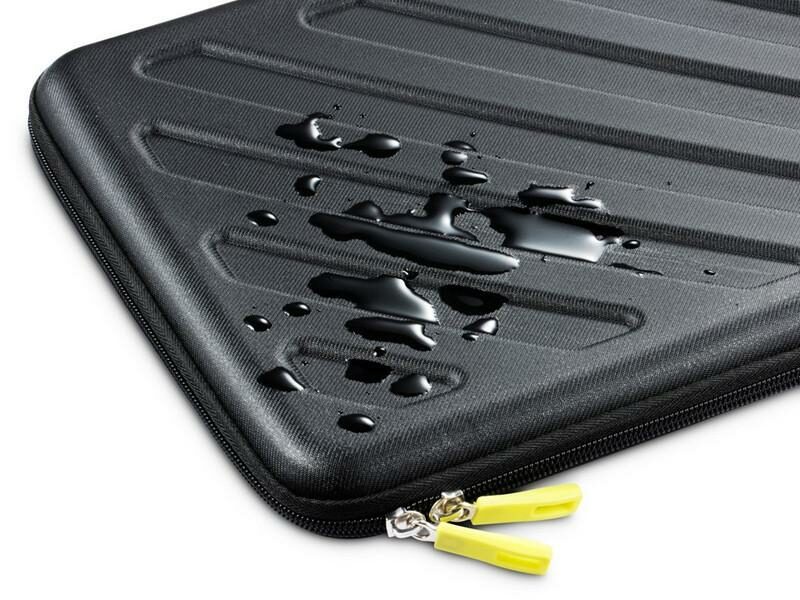
स्थायित्व और संरक्षण
ईवा के मामले कठिन हैं - सादा और सरल. चाहे वह कस्टम ईवा फोम केस हो या ईवा हार्ड शेल केस, ये बुरे लड़के असाधारण प्रभाव प्रतिरोध प्रदान करते हैं. ईवा सामग्री कुशन के सदमे-अवशोषित गुण आपके आइटम, यह उन लोगों के लिए एक शानदार विकल्प बनाना जो नाजुक गियर के साथ यात्रा करते समय मन की शांति चाहते हैं.
हल्के और पोर्टेबल
उनके कठिन बाहरी के बावजूद, ईवा के मामले आश्चर्यजनक रूप से हल्के हैं. यह उन्हें अपने बैग या सामान में अतिरिक्त वजन जोड़ने के बिना ले जाना आसान बनाता है. यदि आप कोई ऐसा व्यक्ति हैं जो हमेशा चलते हैं और थोक के बिना विश्वसनीय सुरक्षा की आवश्यकता होती है, एक ईवा फोम मामला सिर्फ आपका नया सबसे अच्छा दोस्त हो सकता है.
पानी और सदमे प्रतिरोध
जब मूल्यवान वस्तुओं की रक्षा करने की बात आती है तो पानी और सदमे प्रतिरोध आवश्यक होता है, और ईवा निराश नहीं करता है. चाहे आप ईवा इलेक्ट्रॉनिक केस का भंडारण कर रहे हों या ईवा स्टोरेज केस, यह सामग्री पानी और सदमे दोनों के लिए बहुत अच्छा प्रतिरोध प्रदान करती है, यह सुनिश्चित करना कि आपका सामान कम-से-आदर्श परिस्थितियों में सुरक्षित रहें.
कस्टम ईवा के मामले और डिजाइन विकल्प
ईवा मामलों के बारे में सबसे अच्छी चीजों में से एक उनके अनुकूलन विकल्प हैं. चाहे आपको कस्टम आकार की आवश्यकता हो, रंग, या आंतरिक फोम कट-आउट अपने आइटम को व्यवस्थित रखने के लिए, ईवा के मामलों को आपकी विशिष्ट आवश्यकताओं के अनुरूप बनाया जा सकता है. अपने इलेक्ट्रॉनिक्स के लिए एक कस्टम ईवा फोम मामले की आवश्यकता है? कोई बात नहीं. आंतरिक डिब्बों के साथ एक ईवा मेडिकल मामला चाहते हैं? यह संभव है.
ईवा मामलों के सामान्य अनुप्रयोग
ईवा के मामले केवल इलेक्ट्रॉनिक्स के लिए नहीं हैं. इन बहुमुखी मामलों का उपयोग उद्योगों की एक विस्तृत श्रृंखला में किया जाता है. आइए कुछ सामान्य अनुप्रयोगों को देखें:
इलेक्ट्रॉनिक युक्ति संरक्षण
स्मार्टफोन से लेकर कैमरों तक, ईवा इलेक्ट्रॉनिक मामले अपने उपकरणों की सुरक्षा के लिए जाने के लिए विकल्प हैं. गद्देदार इंटीरियर गैजेट्स को बूंदों से सुरक्षित रखता है, धक्कों, और खरोंच.
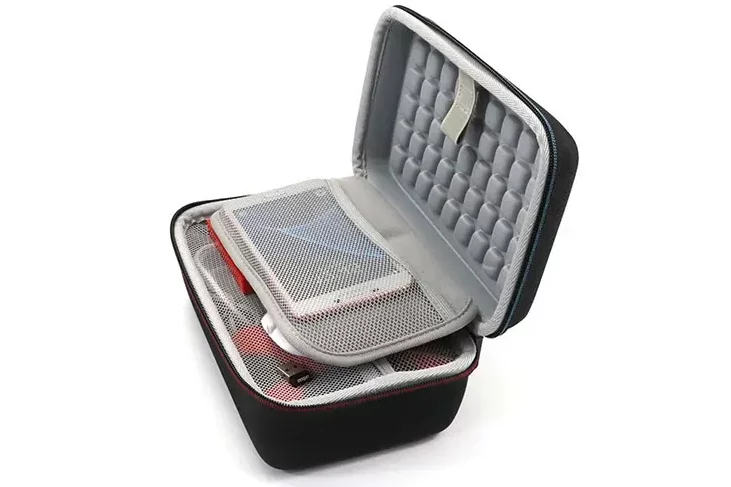
यात्रा और सामान सामान
चाहे आप अपने पोर्टेबल चार्जर के लिए ईवा फोम केस का उपयोग कर रहे हों या अपने टॉयलेटरीज़ के लिए कस्टम ईवा स्टोरेज केस, ये मामले यात्रा के लिए शानदार हैं. वे सब कुछ व्यवस्थित और सुरक्षित रखने में मदद करते हैं, अपने सामान में बहुत अधिक जगह लेने के बिना.
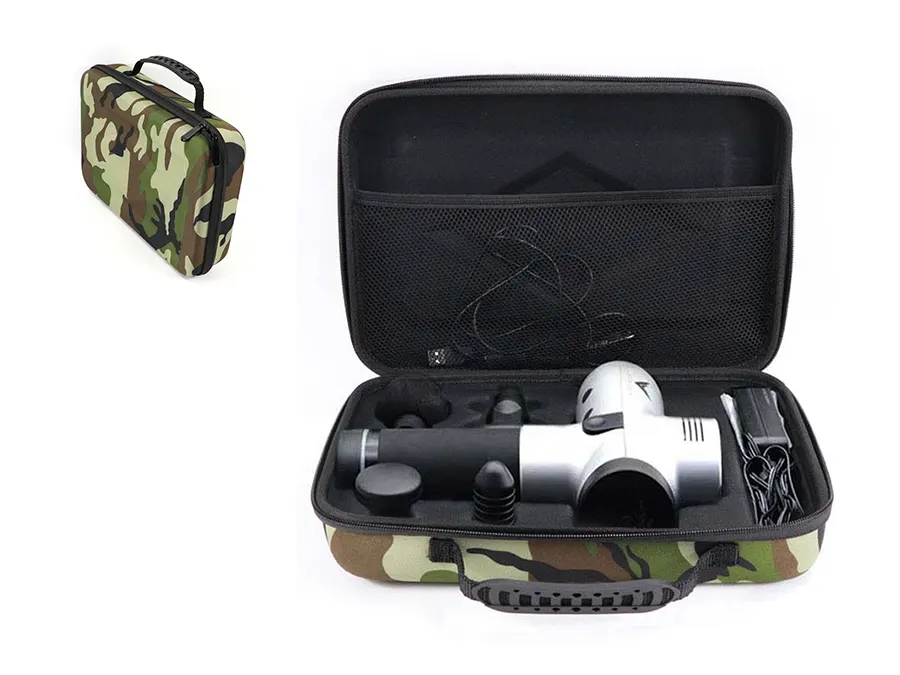
चिकित्सा उपस्कर भंडारण
ईवा मेडिकल केस नाजुक चिकित्सा उपकरणों या आपूर्ति के परिवहन के लिए किसी को भी चाहिए. ईवा सामग्री के स्थायित्व और सुरक्षात्मक गुण परिवहन के दौरान उपकरण को सुरक्षित रखने के लिए एक उत्कृष्ट विकल्प बनाते हैं.
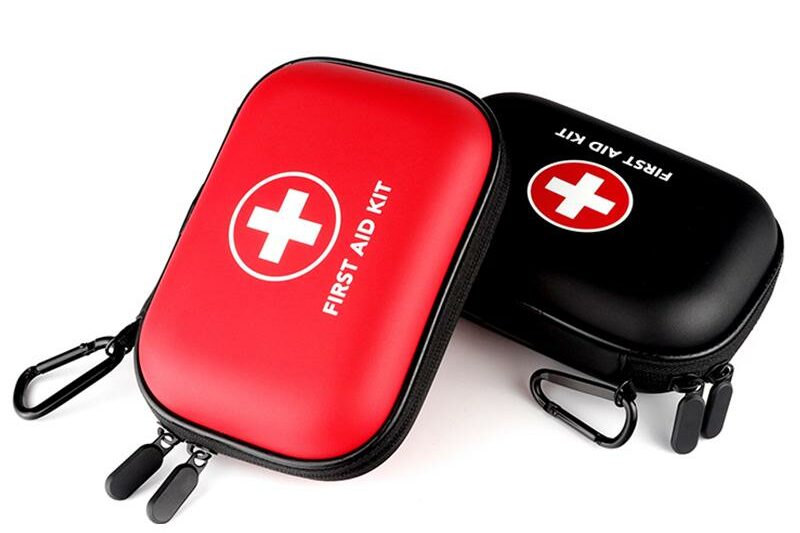
उपकरण और साधन मामले
ईवा के मामले भी एक प्रमुख भूमिका निभाते हैं उपकरण और उपकरणों का भंडारण. उनके सदमे-अवशोषित क्षमताओं और कस्टम डिब्बों के साथ, वे क्षति से सुरक्षित रखते हुए आपके उपकरणों को व्यवस्थित करने में मदद करते हैं.
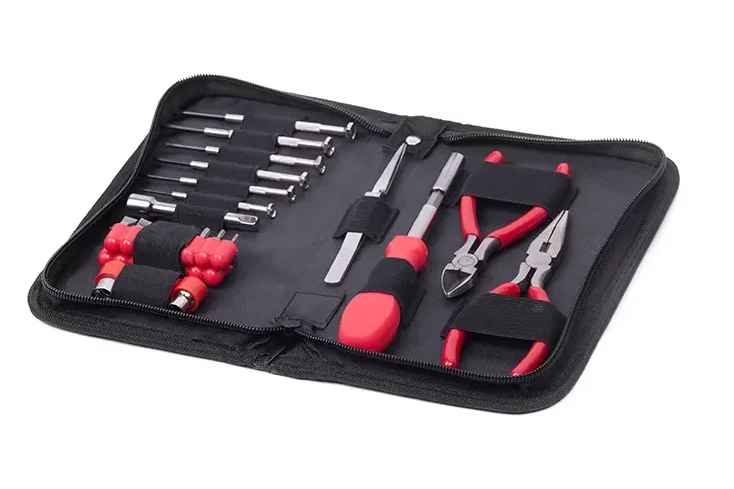
ईवा के मामले कैसे बनाए जाते हैं?
ईवा मामले का निर्माण एक बहु-चरण प्रक्रिया है, और यह आकर्षक है कि सामग्री जीवन में कैसे आती है. यहाँ एक त्वरित अवलोकन है फैक्ट्री में ईवा के मामले कैसे बनाए जाते हैं:
- सामग्री तैयारी: ईवा सामग्री को खट्टा किया जाता है और मोल्डिंग के लिए तैयार किया जाता है.
- लेमिनेटिंग: ईवा सामग्री की परतें वांछित मोटाई बनाने के लिए एक साथ टुकड़े टुकड़े कर दी जाती हैं.
- कटिंग: टुकड़े टुकड़े में ईवा सामग्री को मामले के लिए सही आकार में काट दिया जाता है.
- पूर्व हीटिंग: इसे और अधिक व्यवहार्य बनाने के लिए सामग्री को पूर्व-गर्म किया जाता है.
- थर्मोफॉर्मिंग/मोल्डिंग: ईवा को गर्मी और दबाव का उपयोग करके अंतिम मामले के आकार में ढाला जाता है.
- सांचे को काटना: किसी भी अतिरिक्त सामग्री को छंटनी और आकार दिया जाता है.
- सिलाई: यदि आवश्यक है, मामला जोड़ा स्थायित्व के लिए एक साथ सिलना है.
- निरीक्षण: हर मामला पूरी तरह से गुणवत्ता की जाँच से गुजरता है.
- पैकेजिंग: तैयार उत्पाद पैक किया गया है और शिपिंग के लिए तैयार है.
सही ईवा केस का चयन कैसे करें?
सही ईवा मामला चुनना भारी महसूस कर सकता है, लेकिन अगर आप जानते हैं कि क्या देखना है, प्रक्रिया बहुत सरल हो जाती है.
ईवा मामला खरीदते समय विचार करने के लिए कारक
आपको यह विचार करने की आवश्यकता है कि आप क्या सुरक्षा कर रहे हैं. क्या यह एक नाजुक इलेक्ट्रॉनिक उपकरण है, या यह एक उपकरण है जिसे थोड़ा कम सुरक्षा की आवश्यकता है? ईवा के मामले स्थायित्व के विभिन्न स्तरों में आते हैं, इसलिए सुनिश्चित करें कि आप अपनी आवश्यकताओं को पूरा करने वाले को चुनते हैं.
आकार और आकार संगतता
ईवा हार्ड शेल केस या ईवा फोम केस खरीदने से पहले अपने आइटम को ध्यान से मापें. अधिकतम सुरक्षा के लिए एक उचित फिट आवश्यक है. बहुत तंग, और मामले ने प्रभावी रूप से कुशन नहीं किया; बहुत ढीला, और आपके आइटम अंदर घूम सकते हैं, क्षति का खतरा बढ़ रहा है. सटीक माप एक स्नग की गारंटी देते हैं, सुरक्षित फिट.
सुरक्षा स्तर की जरूरत है
क्या आपको चरम सुरक्षा की आवश्यकता है, या एक नरम ईवा मामला पर्याप्त होगा? आपके द्वारा चुने गए सुरक्षा का स्तर आपके आइटम और आपके बजट की नाजुकता दोनों पर निर्भर करता है. यदि आप कुछ नाजुक भंडारण कर रहे हैं, इलेक्ट्रॉनिक्स की तरह, एक कठिन ईवा मामला अतिरिक्त निवेश के लायक हो सकता है. कम संवेदनशील वस्तुओं के लिए, एक नरम ईवा मामला अभी भी अधिक सस्ती होने के दौरान सभ्य सुरक्षा प्रदान कर सकता है.
लागत बनाम. गुणवत्ता
ईवा के मामले विभिन्न प्रकार की कीमतों में आते हैं, और जबकि यह सस्ते विकल्प का विकल्प चुनने के लिए लुभावना हो सकता है, ध्यान रखें कि गुणवत्ता आपके मूल्यवान वस्तुओं की सुरक्षा में महत्वपूर्ण भूमिका निभाती है. उच्च गुणवत्ता वाले ईवा मामले में थोड़ा अधिक निवेश करना बेहतर स्थायित्व सुनिश्चित कर सकता है, सुरक्षा, और अपने सामान के लिए दीर्घायु. सुरक्षा पर समझौता न करें, विशेष रूप से नाजुक या महंगी वस्तुओं के लिए.
ईवा मामलों की देखभाल और रखरखाव
ईवा के मामले बहुत कम रखरखाव हैं, लेकिन थोड़ी सी परवाह उनके जीवन को लम्बा करने में एक लंबा रास्ता तय करती है.
1. सफाई और रखरखाव युक्तियाँ
अपने ईवा मामले को पोंछने के लिए एक नम कपड़े का उपयोग करें. कठिन दागों के लिए, एक हल्के साबुन समाधान को चाल करना चाहिए. उन कठोर रसायनों से बचें जो सामग्री को नुकसान पहुंचा सकते हैं.
2. अपने ईवा मामले के जीवन का विस्तार कैसे करें?
अपने ईवा केस को अत्यधिक तापमान और प्रत्यक्ष सूर्य के प्रकाश से दूर रखें. इसे एक शांत में स्टोर करें, समय के साथ सामग्री को अपमानित करने से रोकने के लिए सूखी जगह.
EVA Case Customization Options at Kinfish

Shell Design
- Custom molds from CAD drawings for precise shapes
- Matte, glossy, or patterned surface textures
- Built-in handles, edges, or protective structures
फ़ोम आवेषण
- CNC-cut or die-cut foam for exact fit
- Multi-layer inserts for extra protection
- Options: egg-crate, pick-and-pluck, or custom cavities
बाहरी & ब्रांडिंग
- Fabric lamination with nylon, polyester, leatherette, वगैरह.
- Wide color choices with Pantone matching
- Branding via digital print, silk-screen, or embossed logos
Hardware & Features
- Durable zippers, cam locks, or gasket seals
- Carrying options: संभालती है, पट्टियाँ, trolley sleeves
- Interior add-ons: जालीदार जेब, elastic straps, Velcro panels
Compliance & उत्पादन
- Fire-retardant foams, FDA & RoHS compliant
- Low MOQ from 200 units
- Fast prototyping in 2–3 weeks, scalable for mass production
निष्कर्ष
ईवा के मामले टिकाऊ की तलाश में किसी के लिए एक उत्कृष्ट समाधान हैं, लाइटवेट, और अनुकूलन योग्य सुरक्षा. चाहे आप इलेक्ट्रॉनिक उपकरणों को संग्रहीत कर रहे हों, चिकित्सकीय संसाधन, या उपकरण, हर जरूरत के लिए एक ईवा मामला है. सामग्री का ताकत का अनूठा संयोजन, FLEXIBILITY, और सदमे अवशोषण इसे अपने कीमती सामान की सुरक्षा के लिए एक शीर्ष विकल्प बनाता है.
पूछे जाने वाले प्रश्न
- ईवा हार्ड केस और सॉफ्ट ईवा केस के बीच क्या अंतर है? ईवा हार्ड मामले कठोर हैं और अधिक सुरक्षा प्रदान करते हैं, जबकि नरम ईवा के मामले अधिक लचीले और हल्के होते हैं.
- क्या ईवा केस का उपयोग आउटडोर स्टोरेज के लिए किया जा सकता है? हाँ, ईवा के मामलों को पानी-प्रतिरोधी और टिकाऊ होने के लिए डिज़ाइन किया गया है, उन्हें बाहरी उपयोग के लिए उपयुक्त बनाना.
- क्या ईवा फोम के मामले अनुकूलन योग्य हैं? बिल्कुल! कई निर्माता विशिष्ट आंतरिक डिब्बों या कस्टम डिजाइन के साथ कस्टम ईवा फोम मामलों की पेशकश करते हैं.
- ईवा मामला कब तक रहता है? उचित देखभाल के साथ, ईवा के मामले कई वर्षों तक रह सकते हैं, लगातार उपयोग के साथ भी.
- क्या ईवा के मामले बूंदों से बच सकते हैं? हाँ, ईवा के मामलों को झटके को अवशोषित करने के लिए डिज़ाइन किया गया है, बूंदों और प्रभावों के खिलाफ सुरक्षा प्रदान करना.
















